Imagine landing that dream job just by talking to people! Networking is a powerful way to discover job opportunities.
Connecting with others can lead to valuable information and recommendations that you can’t find anywhere else.
When you tell people about your career goals, they might connect you with someone hiring in their company. This can open doors you didn’t know existed.
Building relationships increases your chances of getting hired.
Attending events, joining groups, and using social media makes it easy to meet people in your field.
You get to share your skills and learn about new opportunities.
Your network can be the key to unlocking your next career move.

Defining Networking
Networking is about building connections with people who might help you in your career.
It’s not just about meeting people but forming meaningful relationships that can lead to job opportunities.
Types of Professional Networks
Professional networks come in many forms. One type is formal networks, which include groups like industry associations and professional organizations.
Here, you get to meet people with similar interests and career goals.
Informal networks are just as important. These include friends, family, and casual acquaintances.
Sometimes, a friend of a friend might know of a job opening.
Online networks are also key. Platforms like LinkedIn help you connect with professionals worldwide.
You can join groups, follow companies, and participate in discussions to grow your network.
The Power of Networking
Networking can open doors to job opportunities that you might never find through traditional job searches.
When you know someone at a company, you often hear about jobs before they are publicly posted.
Connections can give you insights into a company’s culture and hiring process. This information can be crucial when you’re preparing for an interview or deciding if a company is the right fit for you.
Networking isn’t just about finding a job. It’s also about getting advice and support from others in your field.
This can help you grow your career long after you’ve landed your next job.
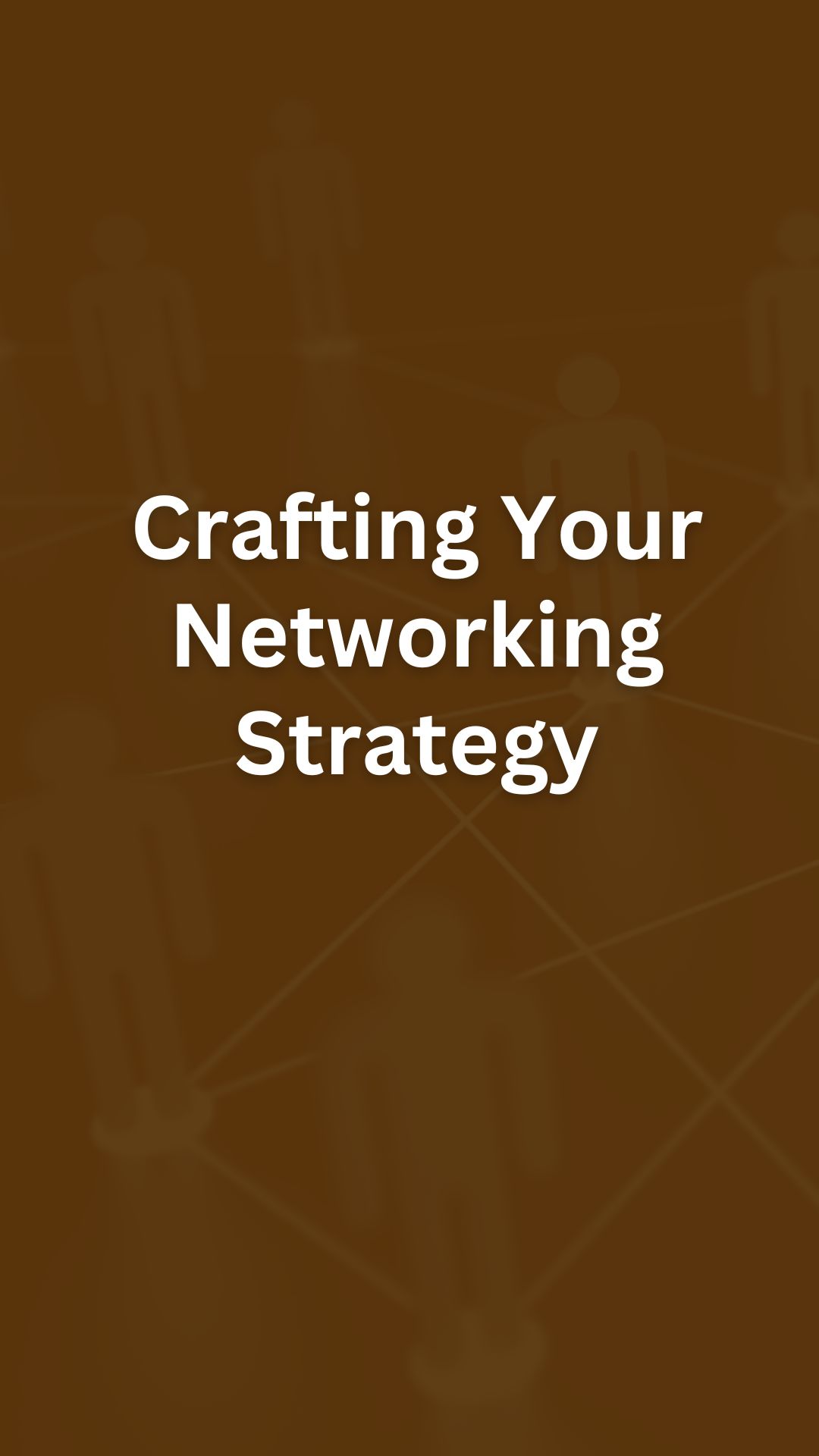
Crafting Your Networking Strategy
To effectively network, you need clear goals and a solid plan. Start by identifying what you want to achieve. Then, develop a strategy to connect with the right people.
Identify Your Goals
Begin by deciding what you want from your networking efforts. Are you looking for a new job in a specific industry?
Do you want to meet professionals with similar interests? Write down your goals.
Next, think about the roles and companies you’re interested in.
Make a list of potential job titles and employers. Also, consider why you’re targeting these roles and companies. Understanding your motivations can help you stay focused.
Finally, set measurable goals. For example, aim to connect with a certain number of new contacts each week.
Clear, specific targets keep you motivated and track your progress.
Develop a Game Plan
Now that you have your goals, it’s time to create a game plan. Start by identifying people you already know who can help.
These might be former colleagues, classmates, or industry contacts.
Next, think about where you can meet new people. Consider attending industry events, joining professional groups, or connecting on LinkedIn.
Make a list of upcoming events and plan to attend at least one per month.
When reaching out, personalize your messages. Mention mutual connections or shared interests.
Be clear about why you’re reaching out and what you hope to achieve. Remember, networking is about building relationships, not just asking for favors.
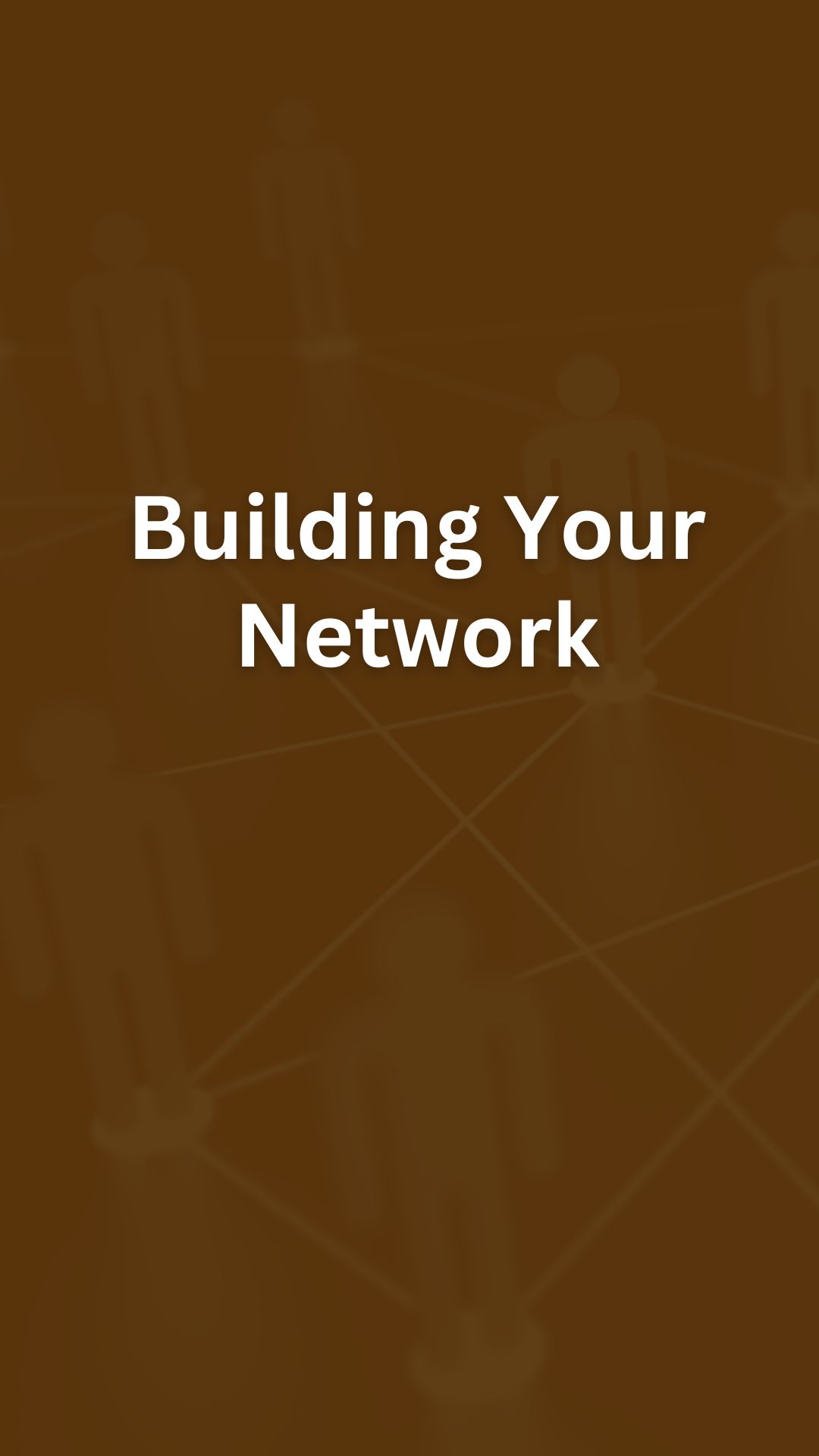
Building Your Network
Building a strong network can help you find job opportunities and gain professional support.
Focus on leveraging social media platforms and attending industry events to expand your connections.
Leveraging Social Media
Social media platforms are goldmines for networking. Start by polishing your profiles on LinkedIn, Twitter, and other networks relevant to your industry.
LinkedIn is crucial.
Make sure your profile is up-to-date with a professional photo, a compelling headline, and detailed job experiences.
Connect with colleagues, classmates, and industry leaders.
Post regularly to show your expertise and engage with others’ posts to stay visible.
Twitter can be useful too.
Follow industry influencers and participate in relevant conversations. Use hashtags to join larger discussions and increase your reach.
Don’t overlook Facebook Groups dedicated to your field.
Join these groups to share ideas, ask questions, and post about your job search.
Be active and helpful; this will make you a valuable community member.
Attending Industry Events
Attend industry events like conferences, workshops, and meetups to meet new people face-to-face. These interactions can leave a lasting impression and often lead to job referrals.
Conferences offer a chance to learn from experts while networking.
Attend sessions, participate in Q&As, and visit exhibition booths.
Always have business cards handy and don’t be afraid to introduce yourself.
Workshops provide a smaller setting for networking.
These are great for making deeper connections since attendees usually share common interests.
Engage actively and follow up with new contacts post-event.
Local meetups are informal but effective.
They are typically more relaxed, making it easier to chat and build relationships.
Join discussions, share your knowledge, and get to know regular attendees.

Networking Etiquette
When networking, it’s important to make a good impression and maintain respectful communication. Here are some specific strategies to help you succeed.
Making a Great First Impression
To make a great first impression, be punctual.
Arriving on time shows respect for others’ time.
Your appearance also matters, so dress appropriately for the event or meeting.
A neat, professional look will give you confidence and show that you take networking seriously.
When you meet someone, smile and offer a firm handshake.
This helps you come across as friendly and confident.
Use the person’s name in conversation; it shows that you are paying attention.
Listen more than you speak.
Show genuine interest in others by asking questions about their work and experiences.
This not only helps you learn but also builds a stronger connection.
Follow-Up Strategies
After meeting someone, it’s crucial to follow up promptly.
Send a brief, polite email or LinkedIn message within 24 hours.
Mention something specific from your conversation to remind them who you are.
Keep your follow-up message short and genuine.
Thank them for their time and express your interest in staying in touch.
If you discussed specific actions, such as setting up a meeting or sharing information, be sure to follow through.
Regularly check in with your new contacts.
Share articles or information that might interest them, and engage with their posts on social media.
By staying in touch, you keep the relationship active and show that you’re interested in their ongoing success.
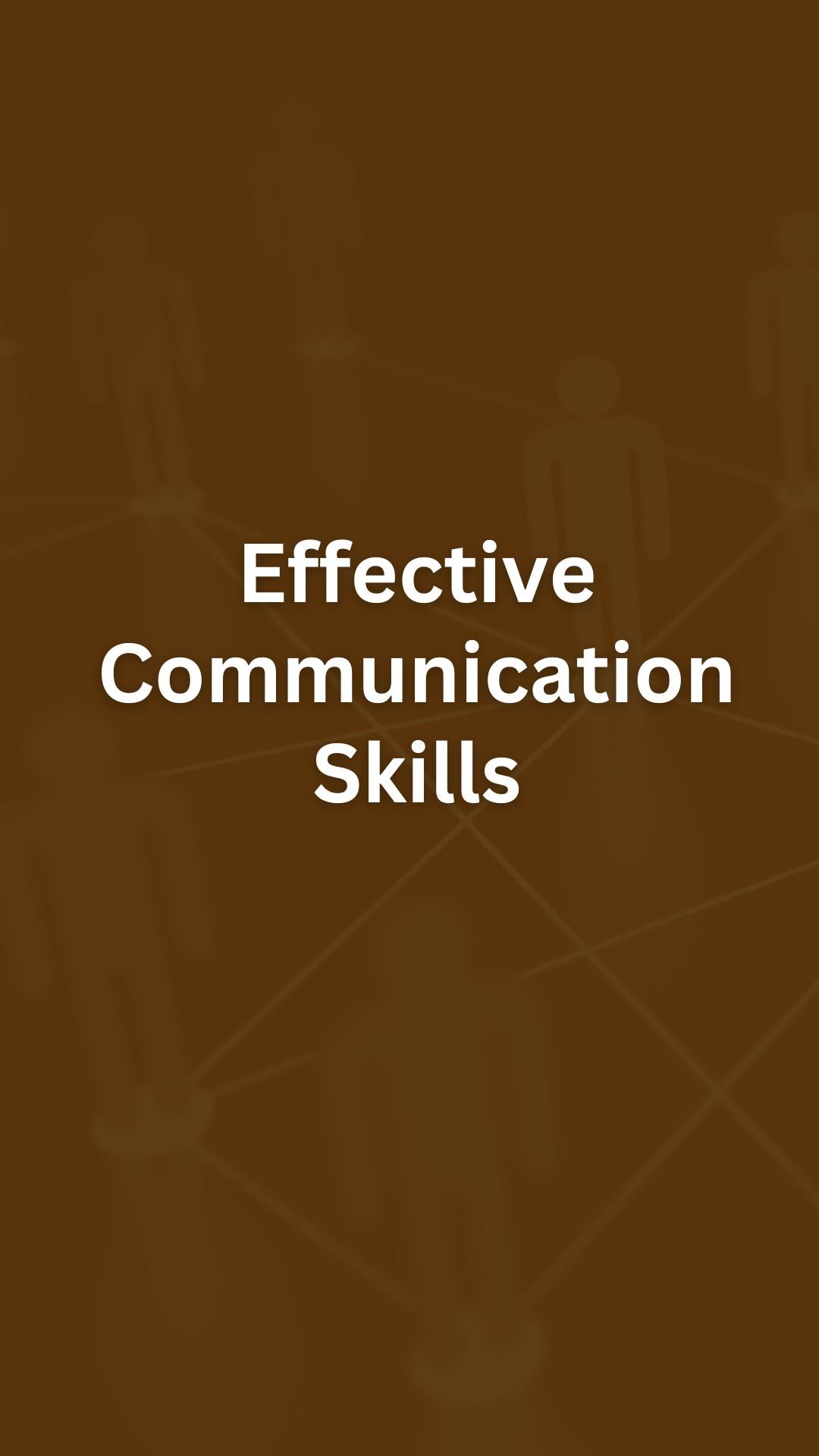
Effective Communication Skills
Doing well in networking starts with good communication. Focusing on active listening and perfecting your elevator pitch can make all the difference.
Active Listening
Active listening involves truly understanding what others are saying.
Start by giving your full attention. Make eye contact and nod to show you are engaged.
Repeat back or summarize what you heard to show understanding.
Ask questions that show interest. This keeps the conversation going and builds rapport.
Avoid interrupting; wait for the speaker to finish. This shows respect and patience.
Examples of active listening phrases:
- “So, what you’re saying is…”
- “I agree because…”
- “That sounds interesting, tell me more about…”
These practices help in making a strong connection with others.
Elevator Pitch Essentials
An elevator pitch is a short, persuasive speech about who you are and what you do. It should be quick, around 30 seconds.
Start with your name and current role or passion.
Focus on key strengths and unique qualities. Be specific about your goals or what you are looking for.
Practice makes perfect – rehearse your pitch until it feels natural.
Key Points for a Great Elevator Pitch:
- Your name and role
- Key strengths
- Immediate goals
- Contact information
An effective pitch should be memorable and leave a strong impression.

Creating Value in Interactions
Building strong connections means making interactions positive and beneficial for everyone involved. You can do this by offering help and looking for mutual benefits.
Offering Help
When you meet new people, always think about how you can help them.
This could be as simple as sharing a useful article, suggesting a good contact, or offering your skills on a project.
By being helpful, you create good feelings.
People remember those who helped them when they needed it. Over time, these small acts can turn into significant opportunities.
Being someone who others can rely on makes you a valued connection.
They are more likely to keep you in mind for job openings or projects that suit your skills.
Mutual Benefits
Networking is not a one-way street. Look for ways that both parties can gain from the relationship.
This might mean collaborating on a project that benefits both of you or trading skills where each party helps the other.
By focusing on mutual benefits, you make the relationship stronger.
Both sides are invested in making it work. This creates a win-win situation where both of you feel valued and supported.
Don’t hesitate to discuss how you can help each other.
This creates a clearer picture of how you can work together and opens the door for future opportunities.
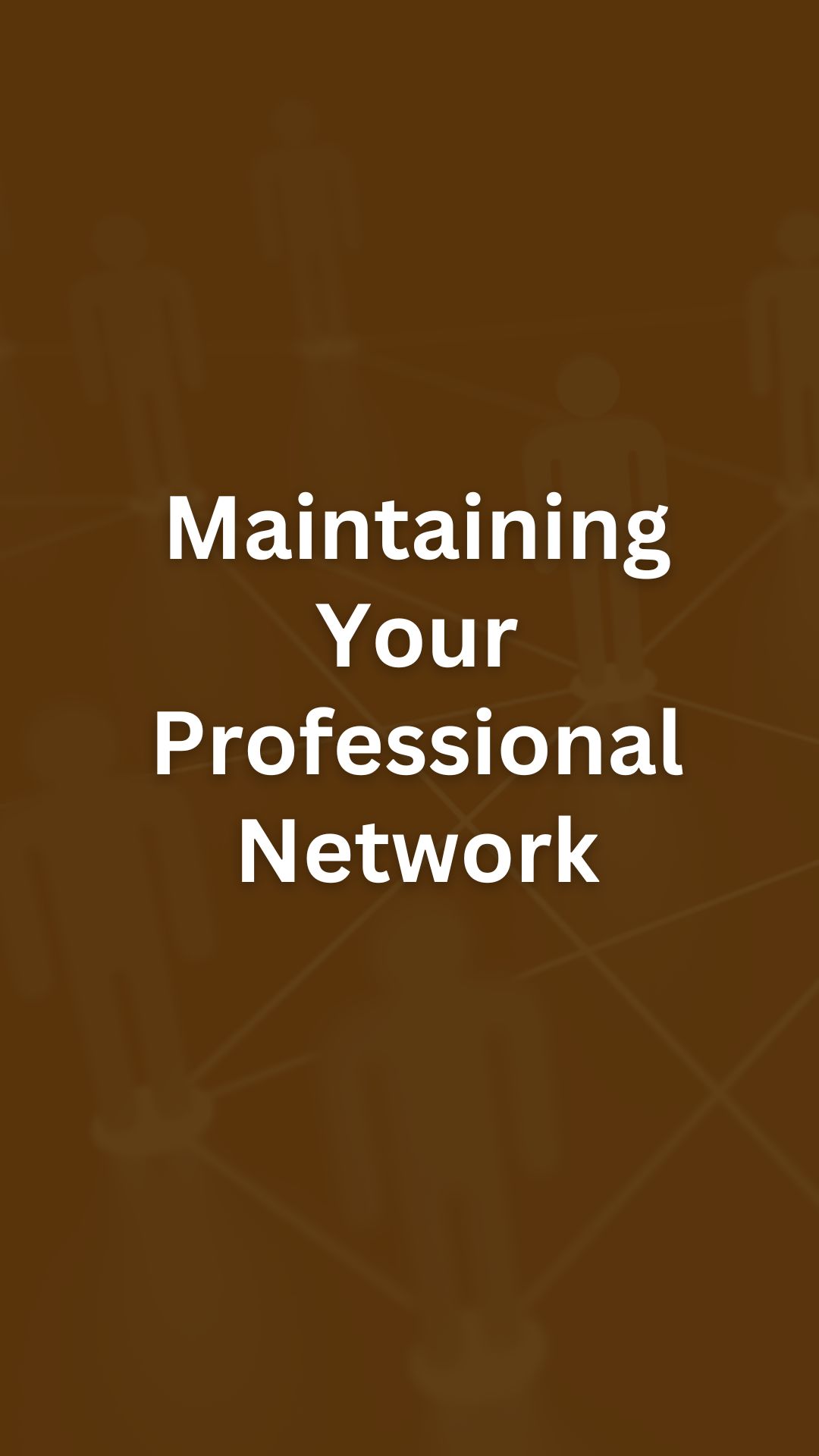
Maintaining Your Professional Network
Staying connected with your professional network is key to long-term career success. This means being active and building genuine relationships.
Consistent Engagement
Keep in touch regularly.
Send updates about your career or share industry news.
Comment on their posts or engage in discussions.
Remember birthdays and work anniversaries.
Small gestures like these keep you visible and show you care.
Use LinkedIn regularly.
It’s a great platform to like, comment, or share posts.
Join groups related to your field and participate in conversations. These actions help you stay connected.
Attend industry events and webinars.
This not only increases your knowledge but also gives you a chance to meet people.
Even virtual meetups help keep you in the loop.
Nurturing Relationships
Build genuine connections.
Take the time to know people beyond their job titles. Learn about their interests and career goals. This builds trust and makes you memorable.
Offer help when you can.
If someone in your network needs advice or a job referral, assist if possible.
Giving back strengthens relationships.
Follow up after meetings.
Whether it’s a quick coffee chat or a formal meeting, send a thank-you note.
Mention something specific from your conversation to remind them of your discussion.
Stay positive and supportive.
Celebrate their successes and offer encouragement during tough times. This shows you value the relationship.
Leveraging Online Platforms
Using online platforms can be a powerful way to expand your job search efforts and connect with potential employers effortlessly. Two of the most important platforms to focus on are LinkedIn and Twitter.
LinkedIn Masterclass
LinkedIn is a professional network where you can showcase your skills, experience, and achievements.
Start by building a strong profile with a professional photo, a compelling headline, and a detailed summary of your experience.
Next, connect with colleagues, classmates, and industry leaders.
Engage with their posts by liking, sharing, or commenting. Join relevant groups and participate in discussions. This will make you more visible to others in your field.
Don’t forget to use the job search feature.
Filter jobs by location, experience level, and industry to find the best opportunities. You can also set job alerts to stay updated on new postings.
Use LinkedIn’s “Open to Work” feature to let recruiters know you are available.
This can increase your chances of being contacted for relevant positions.
Twitter Networking
Twitter isn’t just for casual tweets; it’s a fantastic tool for professional networking too.
Start by following companies you’re interested in, industry experts, and potential employers.
Tweet about topics relevant to your industry. Share articles, comment on trends, and engage in conversations.
Use hashtags to increase the reach of your tweets and connect with like-minded professionals.
Participate in Twitter chats relevant to your career. These are scheduled events where users discuss a specific topic using a common hashtag.
It’s a great way to meet new people and showcase your knowledge.
Lastly, don’t be afraid to reach out directly. Send polite and professional direct messages (DMs) to potential employers or industry leaders to introduce yourself and express your interest in opportunities.
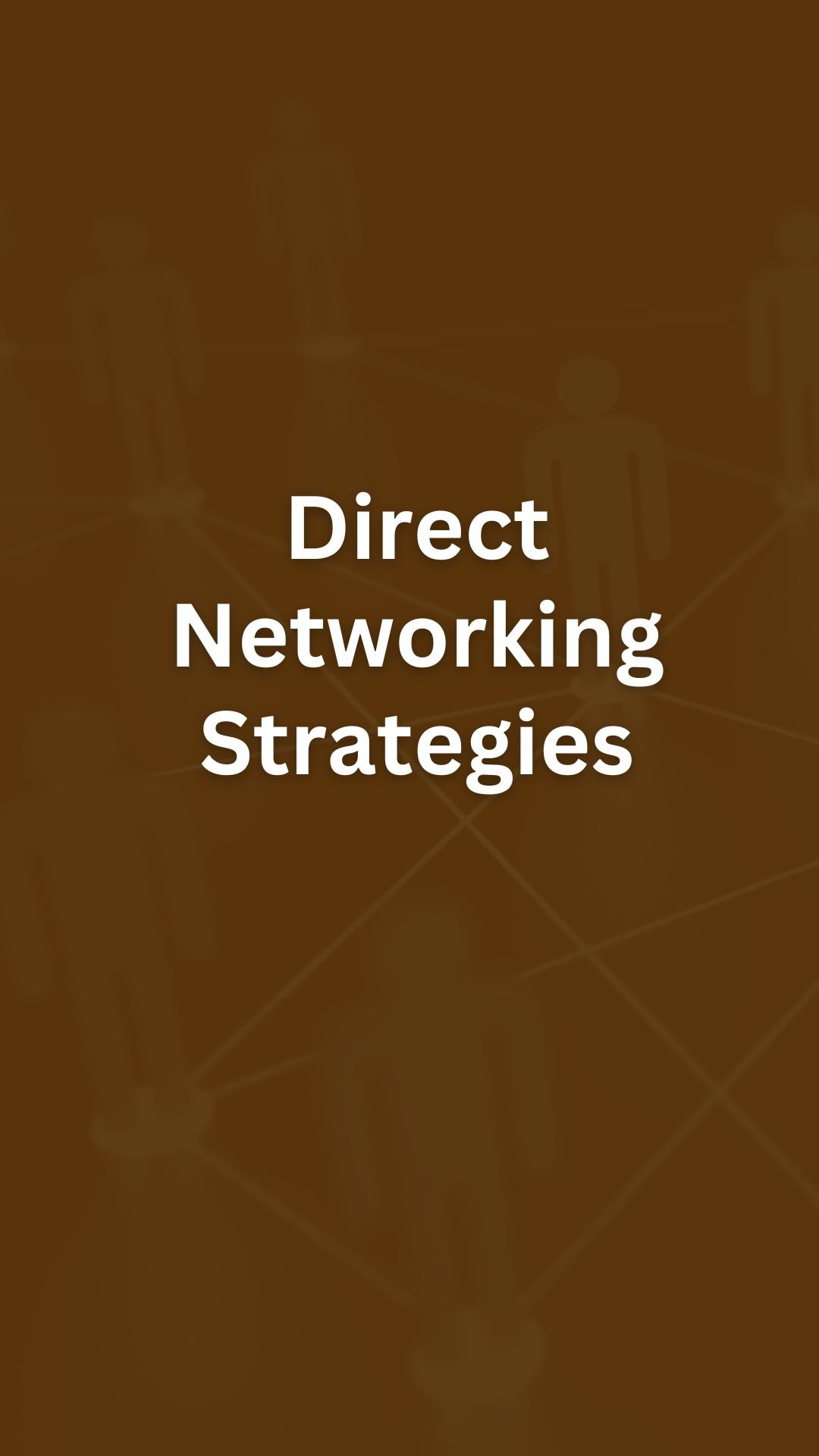
Direct Networking Strategies
Using direct networking strategies can help you quickly find job opportunities.
By reaching out to people you know and even strangers, you can discover hidden job openings and get valuable advice.
Informational Interviews
An informational interview is a meeting where you ask a professional about their job and industry. It’s not a job interview but a way to get insights and advice.
First, identify people in your desired field. You can find them on LinkedIn or through mutual connections.
Send a polite message explaining who you are and why you’d like to talk.
Prepare a list of questions. Ask about their career path, daily tasks, and industry trends.
Keep the meeting short, usually 20-30 minutes.
Follow-up with a thank-you email afterward. Mention something specific you learned. Staying in touch can lead to future opportunities.
Cold Emailing Techniques
Cold emailing means contacting someone you don’t know to ask for a job or information.
Start by researching companies you’re interested in.
Find the right person to contact, usually someone in HR or a department head. Address them by name to make it personal.
Your email should be brief and focused. Introduce yourself, explain why you’re writing, and mention any shared connections or common interests.
Include a clear call to action, like setting up a meeting or phone call.
Always proofread before sending. Make sure your email is clear and professional.
Don’t get discouraged if you don’t get a reply; persistence is key. Keep refining your approach and try reaching out to multiple people.
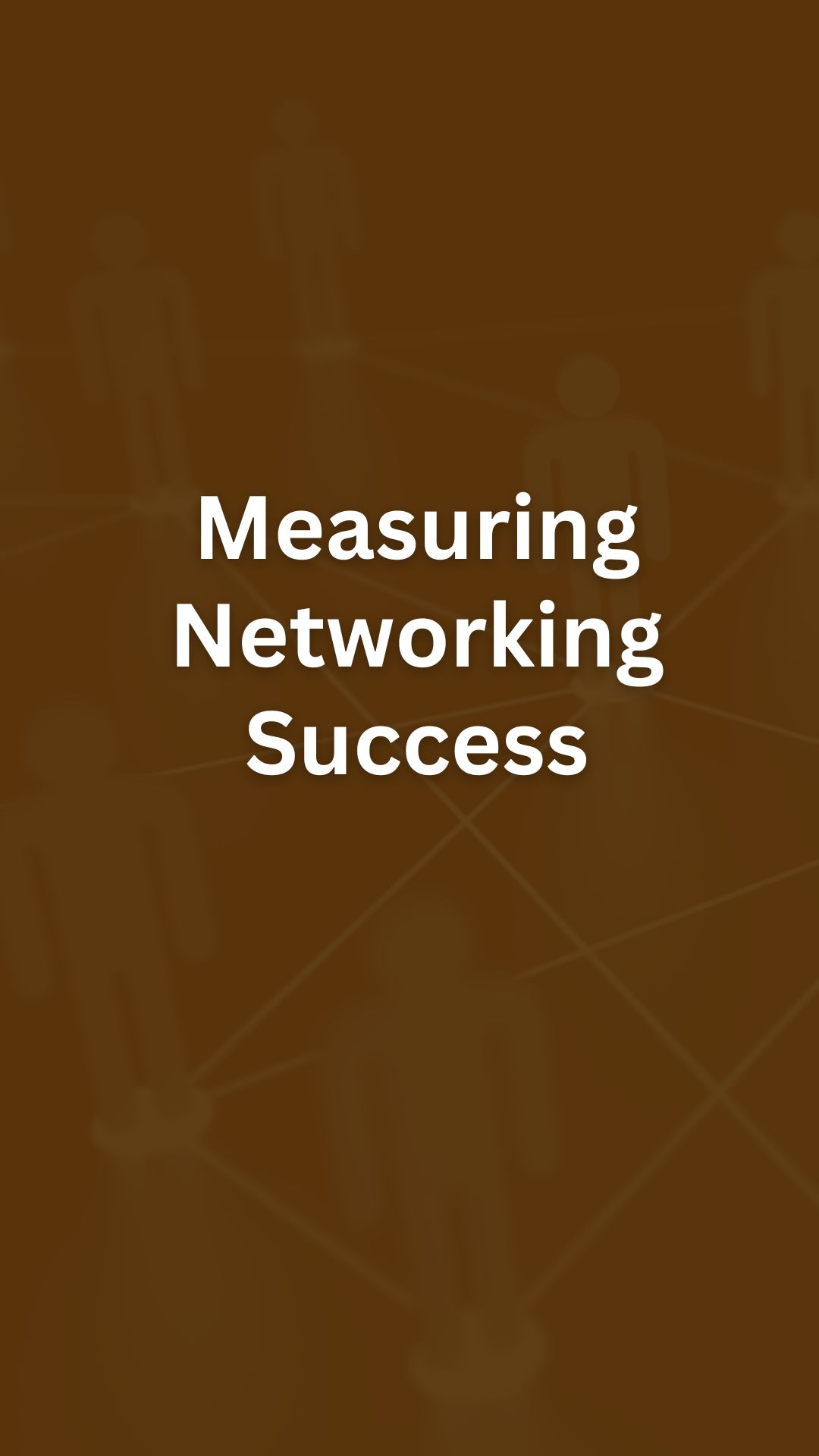
Measuring Networking Success
Measuring how well your networking efforts are going is crucial. It helps you know if you’re on the right track or if you need to change your strategy.
Setting Metrics
To start, set clear goals. You might keep track of the number of new contacts you’ve made.
You could also note how many job leads or interviews come from these connections.
Write these goals down and check them often to see if you’re hitting your targets.
Another way to measure success is by tracking the quality of your interactions.
For example, have some of your new contacts offered help or advice? Are your connections valuable and meaningful?
Sometimes, one great connection is better than ten weak ones.
Use a mix of quantity and quality metrics. Make a checklist or a chart to record your progress. This will help you see how your efforts are paying off.
Reflecting on Progress
Every month, take a step back and look at what you’ve achieved.
Compare your results to the goals you set.
If you reached out to ten people but got no job leads, rethink how you’re connecting with others. Maybe your approach needs tweaking.
Think about the feedback you’ve received. Did anyone offer constructive criticism? Did your contacts follow up with useful information or opportunities?
These are signs you’re doing well. If not, adjust your method and try new things.
Reflect on both positive outcomes and areas for improvement.
Keeping a journal or using an app can help track this. Documenting your journey will make it easier to see patterns and make necessary changes.

Frequently Asked Questions
Get ready to dive into how to harness networking for job hunting! Learn about strategies, tools, and real-life success stories that can help you land your dream job.
What are the top strategies for networking online to land a job?
Focus on joining industry-specific groups on social media. Engage in discussions, share relevant content, and connect with professionals.
Attend virtual networking events and webinars to meet people in your field. Stay active in your online presence, and make sure your profiles are up-to-date.
How can LinkedIn be utilized effectively to network for a new job?
First, optimize your LinkedIn profile with a professional photo and a detailed summary that highlights your skills and experiences.
Join relevant LinkedIn groups, participate in discussions, and post insightful content.
Send personalized connection requests and follow up with meaningful messages. Use LinkedIn’s job search and recommendation tools to find opportunities.
Why is networking such a key component in the modern job search?
Networking opens doors that resumes can’t. Many jobs aren’t advertised publicly, so connections can provide access to these hidden opportunities.
Networking helps build relationships, leading to referrals and recommendations, giving you a competitive edge in the job market.
Personal connections often lead to trust and faster hiring processes.
How does one leverage existing connections to secure employment?
Reach out to former colleagues, friends, and mentors. Let them know you’re looking for new opportunities.
Ask for informational interviews or advice on your job search. Attend alumni events and professional meetups to reconnect.
Express gratitude for any help received and stay in touch regularly without being overly pushy.
What are success stories of networking leading to job opportunities?
Many professionals have found jobs through networking.
For example, someone might attend a conference and hit it off with a speaker, leading to a job offer.
Another person might get referred by a mutual friend for a position that wasn’t advertised.
These stories highlight the power of building genuine relationships.
How do I transform casual interactions into professional job leads?
Start by showing genuine interest in the other person. Listen actively and ask questions about their work.
Share your professional goals and interests. Follow up with a thank you message and keep in touch periodically.
Suggest ways you can assist each other professionally, creating a mutually beneficial relationship.